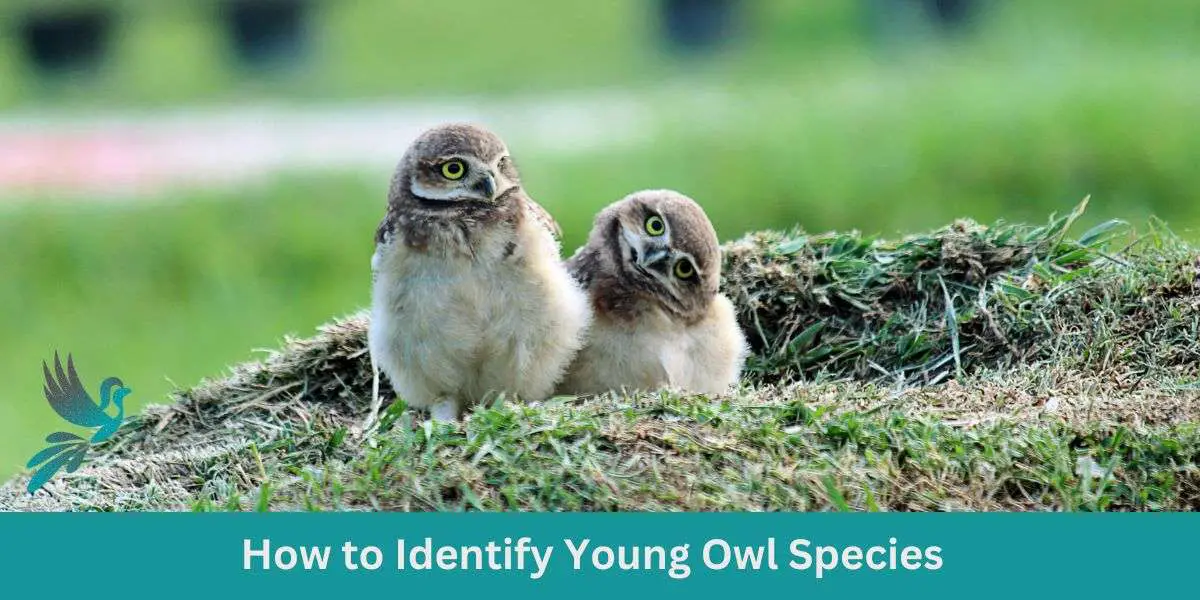Owls, with their enigmatic allure, have fascinated humans for generations. But if identifying adult owls wasn’t challenging enough, distinguishing young owlets can truly test one’s birding skills. Let’s break down the telltale signs to help you confidently identify these fluffy fledglings.
Identifying the Species of a Young Owl: Important Steps to Take
Identifying young owls is a delightful challenge that offers a deeper dive into the world of birdwatching. With patience, keen observation, and a little know-how, you’ll soon be able to distinguish between these downy darlings with ease.
1. Barn Owls:
- Appearance: Young Barn Owls have fluffy white down with a greyish face. Their heart-shaped facial disc is still developing.
- Call: Their call can be a shrill, demanding screech when they’re hungry.
2. Great Horned Owls:
- Appearance: Fuzzy white down covers these owlets, and the signature “horns” or tufts start to emerge but are not fully developed.
- Call: Their vocalizations can be soft whistles or hisses.
3. Eastern Screech Owls:
- Appearance: They sport thick grey or reddish down, depending on the morph. The facial disc is not yet defined.
- Call: Their calls can be soft trills or whinny-like sounds.
4. Barred Owls:
- Appearance: These owlets are cloaked in fluffy white down. Their dark eyes, which contrast the white, are quite striking.
- Call: Often, they produce soft, raspy begging calls.
5. Snowy Owls:
- Appearance: Young Snowy Owls are heavily barred with dark brown. The females usually retain more of this barring as they age.
- Call: Their calls can be low and raspy.
6. Northern Saw-whet Owls:
- Appearance: They are covered in rich brown down, with a subtle facial disc beginning to form.
- Call: They have a series of high-pitched notes that can sound like a truck backing up.
7. Burrowing Owls:
- Appearance: Juvenile Burrowing Owls have a mix of down and feathers. They exhibit a speckled appearance with a white belly.
- Call: Their vocalizations can range from a two-note coo-coo to a rapid chatter.
8. Tawny Owls:
- Appearance: Young Tawny Owls are covered in greyish down. As they mature, their plumage gets browner with streaks.
- Call: Their calls can be shrill and high-pitched when they’re young.
Tips for Identification:
- Location & Habitat: Consider where you’re spotting the owlet. Different owl species prefer different nesting sites and habitats.
- Nest Appearance: Some owls nest in tree cavities, while others might use old hawk or crow nests.
- Parental Activity: Observing the behavior and appearance of nearby adult owls can give a big hint.
Why it is important to identify the species
When it comes to dealing with a young owl, identifying the species is crucial. Each species of owl has its own specific needs and requirements for survival.
By correctly identifying the species, you can ensure that you are providing the necessary care and assistance for the owl’s well-being. Knowing the species allows you to contribute valuable information to conservation efforts, as data on owl populations can help researchers understand and protect these magnificent creatures.
In the case of a young Barn Owl, it is particularly important to identify the species. Barn Owls are protected by law in many countries, and interfering with their nests or handling their young without proper authorization can lead to legal consequences.
Differentiating between young owls can be a rewarding experience. It’s essential to know about Owl Breeding practices and how the Owl Feathers evolve. Additionally, understand Owl Behavior as they grow and the intricacies of their Digestion in Owls. If you come across a distressed chick, it’s crucial to know How to Rehydrate a Dehydrated Owl.
What to do if you find a young Barn Owl
If you come across a young Barn Owl, it is essential to approach the situation with care and caution. Start by observing the owl from a distance, avoiding any sudden movements or loud noises that may distress it. Take note of its behavior, as this can provide valuable information about its health and well-being.
Next, carefully examine the owl for any visible injuries or abnormalities. Note down any observations, as this information will be helpful when seeking professional advice or assistance. Make sure to keep an eye out for its nest nearby, as returning the young Barn Owl to its nest is often the ideal solution.


Leave a Reply
You must be logged in to post a comment.